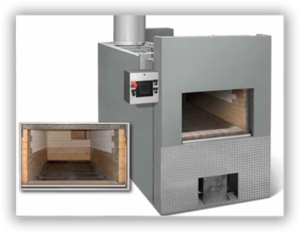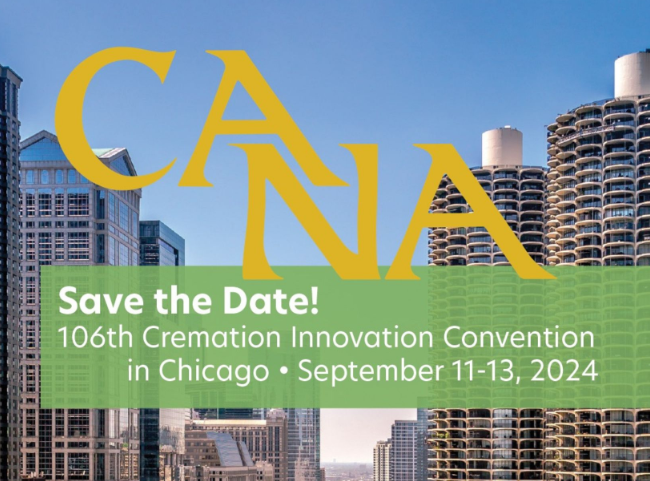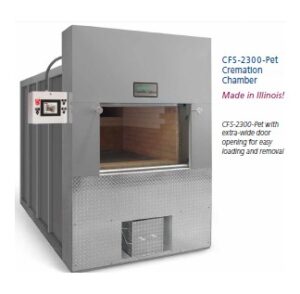Crematory Operator Certification:
A Guide for Funeral Professionals
Cremation has become the choice of more than half of families today. With that shift comes new responsibilities for funeral homes and crematories to meet higher expectations of safety, compliance, and dignity. Families want reassurance that the person operating the crematory is trained, certified, and accountable. That is where Crematory Operator Certification comes in.
What Is Crematory Operator Certification? Crematory Operator Certification is a professional credential that verifies an individual has completed formal training to operate cremation equipment safely, legally, and respectfully.
This guide explains what certification entails, who requires it, and why it is essential. Whether you are new to cremation services or looking to strengthen your professional credentials, understanding this process can help you meet both regulatory requirements and family expectations.
The Role of Crematory Operator Certification in Modern Funeral Service
Crematory Operator Certification is a credential earned through formal training on cremation operations. Programs offered by the Cremation Association of North America (CANA), the National Funeral Directors Association (NFDA), and the International Cemetery, Cremation, and Funeral Association (ICCFA) are recognized organizations that provide training across the industry. These programs confirm that operators have mastered the knowledge and skills needed to operate cremation equipment, protect staff and the environment, and serve families with professionalism.
For funeral homes, certification is not just about compliance. It builds trust and demonstrates that every cremation is carried out with dignity, accuracy, and care.
Why Certification Matters for Operators and Families
Certification provides clear proof of professionalism. It ensures:
- Compliance with state and federal regulations
- Safer operation of crematory equipment
- Reduced risk of mistakes or liability issues
- Greater trust from families choosing cremation
- Better operational efficiency through training on best practices
For families making one of life’s most important decisions, the knowledge that a certified operator is in charge provides peace of mind.
Licensing Requirements for Running a Crematorium
One of the most frequently asked questions is whether a license is required to operate a crematory. The answer depends on your state. In many states, certification is tied directly to licensing. Some require funeral director licensure in addition to crematory operator certification, while others allow standalone crematory operators to qualify through certification alone.
Checking with your state funeral board or regulatory body ensures you meet the specific requirements where you practice.
Training and Skills Covered in Crematory Operator Certification
Certification courses are designed to be practical and comprehensive. Training typically includes:
- Safe operation of crematory retorts
- State and federal regulations governing cremation
- Identification and recordkeeping procedures
- Environmental and emissions management
- Handling remains respectfully and professionally
CANA and NFDA both offer programs that can be completed online or in person, often in just one to two days.
Renewal Periods and Continuing Education for Operators
Certification is not permanent. In most states, certifications are valid for three to five years. Renewal generally requires continuing education or a refresher course to stay current on industry regulations, safety standards, and evolving best practices.
This ongoing learning protects operators, facilities, and the families they serve.
Certification Versus Licensing: Understanding the Difference
Certification and licensing are related but not the same.
- Crematory Operator Certification is proof that an operator has completed recognized training and demonstrated competency.
- A Cremation License is legal permission granted by the state to operate a crematory, which often requires certification as a prerequisite.
In short, certification validates your knowledge and skills, while licensing gives you the legal authority to put them into practice.
Who Benefits Most from Crematory Operator Certification
Certification is valuable for:
- Funeral directors and licensed staff
- Standalone crematory operators
- Cemetery employees managing cremation facilities
- Apprentices preparing to enter funeral service
In all cases, certification enhances credibility and shows a commitment to best practices.
Steps to Begin the Certification Process
Getting certified usually follows four steps:
- Select a recognized program such as CANA or NFDA.
- Complete the training, either online or in person.
- Pass any required exams.
- Provide proof of certification to your state licensing board, if required.
Some states also require facility inspections or additional permits before operations can begin.
Proof Points: Why Certification Strengthens Your Practice
- According to CANA, over 3,000 operators have completed their Crematory Operator Certification Program.
- NFDA’s certification is recognized in 40+ states and internationally.
- Crematories that employ certified operators report fewer compliance issues and higher family satisfaction scores.
These proof points demonstrate that certification is more than just a regulatory checkbox. It is a mark of professionalism that elevates the reputation of your facility.
FAQs About Crematory Operator Certification
- How long does it take to get certified as a crematory operator?
Most certification programs can be completed in one to two days. - Is crematory operator certification required in every state?
Not all states mandate it, but many do. Even in states where it is optional, certification is strongly recommended. - Can certification be completed online?
CANA and NFDA both offer online courses that include testing and digital certification. - How much does crematory operator certification cost?
Costs usually range from $500 to $700, depending on the provider and format. - What happens if a crematory operates without certified staff?
Operating without certification in states where it is required can result in fines, suspension of licenses, or even legal action.
Final Thoughts and Next Steps
Earning a Crematory Operator Certification is a crucial step for anyone involved in cremation services. It ensures safety, compliance, and dignity in every case while building the trust families are looking for.
If you are ready to take the next step, explore programs from ICCFA, CANA, or NFDA, and confirm your state’s requirements before enrolling. Investing in certification strengthens your practice and sets you apart as a trusted professional in the growing field of cremation.
Looking to strengthen your crematory operations beyond certification? Cremation Systems provides advanced cremation equipment, resources, and guidance to help operators work safely, efficiently, and with complete compliance. Contact Cremation Systems today.




